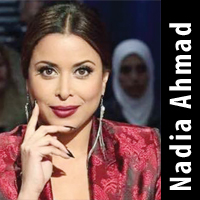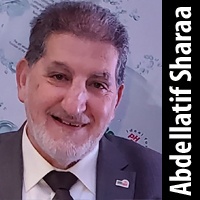

Recently, Kuwait witnessed the spark of a very heated conversation that began as a strategic cyber strike from the political Islamist right on local/regional non-profit youth organization LOYAC and its Chairwoman Fareah Al-Saqqaf. Fareah posed a question in a Dutch documentary about Kuwait a year ago that was taken out of context and made viral last week in order to facilitate the attack on LOYAC.
I do not want to jump to the defense of LOYAC as I believe its 17-year history in youth empowerment and regional community development speaks for itself. I also do not want to jump to the defense of Fareah Al-Saqqaf as she happens to be my mother and I her only daughter, thus my objectivity might be seen as injured in this case. Here I speak as an independent Kuwaiti journalist.
What I do want to defend, among the very many of our freedoms that have been encroached upon, is the right of our young community to debate issues freely. Fareah Al-Saqqaf unknowingly sparked what can be turned into a very productive, local and even regional debate. Is a full-face veil (niqab) and its increased presence in our community a cause for alarm?
The problem is, the political Islamist right have a useful tool they continue to illegitimately use to sway public opinion - accusing any such discussion as treasonous against Islam, and on an international level, a violation of human rights. However, discussing the niqab and its relevance in our community is not a sacred or religious issue or taboo. The vast majority agree that the niqab in not Islamic. Let me remind you, that the mothers of the local feminist movement publicly burned their traditional abayas over half a century ago.
I'll avoid offering a history lesson as to how and why the niqab became suddenly more prominent in our communities over the last two decades after it had, in effect, disappeared between 1950 to 1970. You can Google that. If you did search this issue, you'll have found that the burqa is traditional but the niqab ideological.
Let's assume for argument's sake that the niqab is traditional wear - shouldn't it be reserved for the places and backdrops it belongs to? A picture of a niqabi woman set to the backdrop of old Kuwaiti mud house villages or nomadic Bedouin tents in the desert makes sense and is quite beautiful and poignant and nostalgic. However a picture of a niqabi woman set to the backdrop of a modern, Westernized city does not make sense and does, in this day in age, cause alarm. After all, it is traditional for some indigenous women of the Amazon to go bare-chested? Would we allow that in a modern community?
According to the Islamic scholar Mohammad Shahrour, in any community, if a woman is allowed to walk the streets completely bare-skinned, then she should be allowed to cover her face and body completely, but if she is not allowed to walk completely bare-skinned, then she should not be allowed to cover her face and body completely. I find justice in this logic.
When the argument of human rights is brought up in defense of the niqab, I beg to ask the questions: What about the human rights of non-niqabis in knowing who shares public spaces with them? In these modern times, shouldn't there be a minimal degree of transparency in public dealings to secure everyone's human right to safety? What about the marginalization of non-hijabi Muslim citizens when the government publicly supports hijab campaigns among 10-year-old girls? Is it not a human right for women to be acknowledged as individuals rather than one in an indistinguishable flock of black drapes? Isn't it an intrinsically oppressive garment if it automatically excludes you from assuming most jobs that contribute to today's economy?
Covering the body and hair is every Muslim's right; I don't dare to contest that, but does covering the face and body completely in public areas serve anyone? It is currently a serious security issue internationally. We cannot ignore the statistics of men with terrorist intentions wearing niqab to conceal their weapons or to be granted entry into certain locations. In the UK, a great point was made that CCTV (security cameras) are completely ineffective if they cannot see people's faces. We also cannot ignore that the niqab is a known part of an extremist indoctrination process that isn't exactly famous for its female empowerment policies. In fact, the niqab, in and of itself, quite literally deletes a woman's identity.
Simply put, when there is an increase in mass gun violence, there needs to be a ban on automatic guns. I applaud New Zealand on its recent ban on automatic weapons and sincerely hope the US makes a similar stance. Therefore, when there is a clear correlation between using traditional uber-conservative dress to conceal weapons and explosives that result in mass murders, there needs to be ban on that specific traditional dress.
The reason why Europe is having a difficult time settling into a ban is because it has not made a clear argument against the findings of the UN that a niqabi ban is in violation of human rights. Over the last few years, we have seen Western women dress in the niqab in solidarity and protest of a ban. This is precisely why this conversation must be had here in the Arab world first. So first and foremost, let's stand up and protect our freedom of thought and speech and the right to debate such issues without our conviction in our religion being viciously attacked.
With that, I would like to congratulate Morocco on its ban of the burqa/niqab back in 2017 when they cited two major reasons: Serious security concerns and to nip the expansion of extremist ideologies in the bud. I also hope the Islamist right does not succeed in scaring us back into silence and that we continue to cultivate debates that can take our country forward. After all, a healthy debate is key to any globally-aware, cultured community governed by justice and a constitution.
Nadia Ahmad is a Kuwaiti journalist, TV presenter, film producer and cofounder of LOYAC.
By Nadia Ahmad
Twitter: @IamNadiaAhmad



